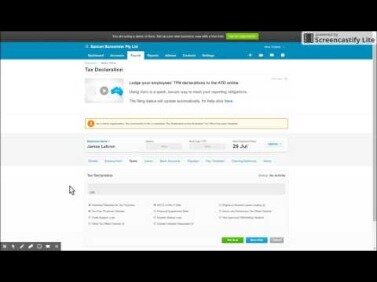

In that scenario, you would need to win new sales of $2 million to make up for the lost profits. Well known and widely used by European companies for decades, accounts receivable insurance is now becoming more commonplace among companies of varying sizes based in North America as well. Notes payable are debts a business owes to another company, usually a supplier or vendor. This account balance can be shown in the balance sheet as a deduction from all notes receivable. This approach is usually suitable if the discount on notes receivable is with recourse, as long as the disclosure of the contingent liability is made either parenthetically or in a footnote (e.g., stating that the note will be paid when it matures).
- https://maximarkets.world/wp-content/uploads/2020/08/forex_team.jpg
- https://maximarkets.world/wp-content/uploads/2020/08/logo-1.png
- https://maximarkets.world/wp-content/uploads/2019/03/MetaTrader4_maximarkets.jpg
- https://maximarkets.world/wp-content/uploads/2020/08/forex_education.jpg
Insured companies can sell on open account terms where they may have previously been restrictive or only sold on a secured basis. In the next examples, this process is applied to calculate the discount on three notes receivable by the Sample Company. Given that most discounted notes are reviewed for their creditworthiness by both the bank and the endorser, contingent liability rarely turns into a real liability. This means that the company discounting the note, known as the endorser, guarantees the eventual full payment of its maturity value. The implied interest rate is calculated to be 5% and the note’s interest component is $2,165 ($10,000 − $7,835), which is the difference between the cash lent and the higher amount of cash repaid at maturity.
Impairment of notes receivable
However, if the transferee is permitted to sell or pledge the assets, the transferor must reclassify the receivables and report them separately from other receivables. In the case of an option, the transferor may wish to require interest-bearing receivables, for example, when interest rate changes would be favorable to the holder of the receivables. Although an option to repurchase the receivables may, at first, seem to imply that control has not passed to the transferee, the option does not entitle the transferor to receive interest or other benefits from the transferred receivables. The transferor does not have custody of the assets, does not control the disposition of the asset, and cannot access the asset unless the option is exercised. The recourse obligation by itself does not prevent the recording as a sale. Nor does an option held by the transferor to repurchase the receivables necessarily require recording the transfer as a loan.
Similarly, policyholders may request coverage on a new buyer with which they’d like to do business. Allianz Trade receives over 20,000 credit limit requests every day and processes 85% of them in less than 48 hours. In the case of Allianz Trade, buyer and country risk evaluations are aggregated into aproprietary risk grade. This risk grade is informed by data from more than 85 million companies monitored in our database, the local insights from our presence in 52 countries, and the nearly $1 trillion in trade transactions we cover globally.
Allowance for Doubtful Accounts
The enterprise selling the accounts receivable is called the transferor and the company buying the receivables is called transferee . Sales discount is a contra account to sales, reducing net sales by the amount of cash discount taken. The gross method specifically identifies discounts taken by customers. “With accounts receivable insurance, we don’t have to ask for cash up front or payment on delivery, which makes us much more competitive."
- https://maximarkets.world/wp-content/uploads/2021/06/platform-maximarkets-5.jpg
- https://maximarkets.world/wp-content/uploads/2021/06/platform-maximarkets-4.jpg
- https://maximarkets.world/wp-content/uploads/2019/03/Platform-maximarkets-2.jpg
- https://maximarkets.world/wp-content/uploads/2020/08/forex_trader.jpg
Introduction of the Internet and the web has accelerated the process while reducing costs. Today credit information and insurance coverage are instantly available online. The web has also made it possible for factors and their clients to collaborate in real time on collections. Acceptance of signed documents provided by facsimile as being legally binding has eliminated the need for physical delivery of "originals", thereby reducing time delays for entrepreneurs. Governments were latecomers to the facilitation of trade financed by factors.
What are the benefits of accounts receivable factoring?
Accounts receivable factoring is a form of financial management that enables businesses to get immediate cash after selling their receivables to a third-party called ‘factor’. A company uses factoring when it decides to sell its accounts receivable at a discounted rate. After the sale of receivables, the company receives immediate cash. Use of the allowance method requires a year-end estimate of expected uncollectibles accounts based upon credit sales or outstanding receivables. The estimate is recorded by debiting an expense and crediting an allowance account in the period in which the sale is recorded. Then in a subsequent period when an account is deemed to be uncollectibles, an entry is made debiting allowance account and crediting accounts receivable.

On the due date, the factor collects the payment of $10,000 from the customer, and charges a 10% fee on the amount advanced to Company A. It then returns the remaining balance amount to Company A. Accounts receivable are the balance of money due to a firm for goods or services delivered or used but not yet paid for by customers. Net receivables are the money owed to a company by its customers minus the money owed that will likely never be paid, often expressed as a percentage. Therefore, companies must estimate a dollar amount for uncollectible accounts using the allowance method.
Businesses are able to convert receivables, unpaid money they are owed, into cash before they're technically due to be fully paid. Learn this process in factoring, and understand the strategies of pledging. Most forfaiting transactions will have a maturity ranging between 180 days and seven years, the payment period for foreign buyers of U.S. exports. Forfaiters, not U.S. exporters, are responsible for collecting payments from foreign buyers.
The https://bookkeeping-reviews.com/ amount must therefore be the amount required that results in that ending balance of the AFDA. Non-trade receivable—arise from any number of other sources such as income tax refunds, GST/HST taxes receivable, amounts due from the sale of assets, insurance claims, advances to employees, amounts due from officers, and dividends receivable. These are generally classified and reported as separate items in the balance sheet or in a note that is cross-referenced to the balance sheet statement.

Typically, the older the uncollected account, the more likely it is to be uncollectible. Fol- lowing this premise, the accounts receivable are grouped into categories based on the length of time they have been outstanding. Many companies set their credit policies to allow for a certain percentage of uncollectible accounts.
Entity saves on the loss of opportunity during the credit period. The information contained in this website is for general information purposes only. Any reliance you place on such information is therefore strictly at your own risk. SMB Compass is a bespoke business financing company focused on providing financing and education to small businesses across the United States. Job Role Director/VP/CXO Manager Individual Contributor Student/Freelance By submitting this form, I consent to HighRadius sending me marketing communications and processing my personal information in accordance with the privacy policy. AR factoring is much simpler and transparent compared to taking loans.
The future amount can be a single payment at the date of maturity or a series of payments over future time periods or some combination of both. For each method above, management estimates a percentage that will represent the likelihood of collectability. The estimated total amount of uncollectible accounts is calculated and usually recorded to the AFDA allowance account, with the offsetting entry to bad debt expense. The net amount for accounts receivable and its contra account, the AFDA, reflects the net realizable value of the accounts receivable at the reporting date. Other management strategies can be implemented to shorten the receivables to cash cycle. In addition to the discounts or late payment fees listed above, small- and medium- sized companies may decide to sell their accounts receivable to financial intermediaries .
BLOOM ENERGY CORP MANAGEMENT'S DISCUSSION AND ANALYSIS OF FINANCIAL CONDITION AND RESULTS OF OPERATIONS (form 10-K) - Marketscreener.com
BLOOM ENERGY CORP MANAGEMENT'S DISCUSSION AND ANALYSIS OF FINANCIAL CONDITION AND RESULTS OF OPERATIONS (form 10-K).
Posted: Tue, 21 Feb 2023 08:00:00 GMT [source]
Net receivables are equal to the accounts receivable amount less any allowance for doubtful accounts . Receivables are asset accounts applicable to all amounts owing, unsettled transactions, or other monetary obligations owed to a company by its credit customers or debtors. In general, receivables are claims that a company has against customers and others, usually for specific cash receipts in the future. These are contractual rights that have future benefits such as future cash flows to the company. These accounts can be classified as either a current asset, if the company expects them to be realized within one year or as a long-term asset, if longer than one year. A well-structured receivables securitization can frequently represent the lowest cost component of a company’s capital structure, especially for relatively large unrated or sub-investment grade corporations.

If the propeller industries receives equity investment from newlight partnersed price is accepted, the exporter signs a commitment letter issued by the forfaiter. Present transaction details to forfaiter -The exporter presents details of the proposed sale and financing to the forfaiter. Typical details include name of buyer, type of goods being sold, date, duration, and currency of the contract, credit period, payment schedule, and evidence of debt.
For example, General Electric has clear processes to be followed which distinguish between their work and payment sensitivities. Contracts direct with the US government require an assignment of claims, which is an amendment to the contract allowing for payments to third parties . While factoring fees and terms range widely, many factoring companies will have monthly minimums and require a long-term contract as a measure to guarantee a profitable relationship. Although shorter contract periods are now becoming more common, contracts and monthly minimums are typical with "whole ledger" factoring, which entails factoring all of a company's invoices or all of the company's invoices from a particular debtor. However, the loan-to-asset ratio (i.e. the amount of loan to be received against the value of accounts receivables) varies from lender to lender. So, the agreements are entered with the factoring entity in multiple ways, either through the sale of an asset (i.e. accounts receivable factory) or through actual receipt of a loan .